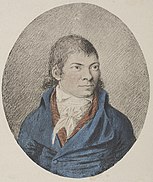
The Jennow House is a historic property located at Strandgade 12 in the Christianshavn neighbourhood of Copenhagen, Denmark. It takes its current name after Andreas Jennow, a businessman who owned it from 1949 to 1978. His company Andreas Jennow A/S was based in the building until 1988.

Nyhavn 11 is an 18th-century property overlooking the Nyhavn canal in central Copenhagen, Denmark. Ludvig Ferdinand Rømer established a sugar refinery on the property in 1653 and it was later continued by changing owners until at least the 1860s. A small figure of a sugar-baker holding a sugar cone is still seen above the gate. The building was listed in the Danish registry of protected buildings and places in 1932. Notable former residents include the general trader Jacob Severin and actors Christen Niemann Rosenkilde, Julie Sødring and Poul Reumert. The lamp manufacturer Louis Poulsen was later based in the building from 1908 to 2006.

The Verrayon House is a Rococo, bourgeoisie townhouse located at Lille Strandstræde 6 in central Copenhagen, Denmark. It was listed by the Danish Heritage Agency in the Danish national registry of protected buildings in 1943.

Nyhavn 13 is a historic townhouse overlooking the Nyhavn Canal in central Copenhagen, Denmark. With roots dating back to the late 17th century, it owes its current appearance to a heightening of the building with two floors in 1842. Notable former residents include the businessman Abraham Marcus Hirschsprung and the painter and educator Wilhelm Kyhn. The building was listed in the Danish registry of protected buildings and places in 1945.
Store Strandstræde 7 is a small building located close to Kongens Nytorv central Copenhagen, Denmark. The building was listed on the Danish registry of protected buildings and places in 1989.
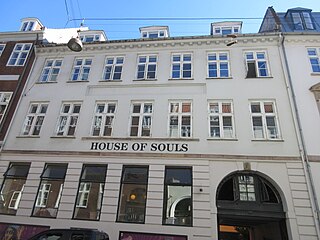
Vestergade 3 is a Neoclassical property in the Old Town of Copenhagen, Denmark. The building was constructed as part of the rebuilding of the city following the Copenhagen Fire of 1795. It was listed in the Danish registry of protected buildings and places in 1959. Notable former residents include the clergy Christian Bastholm and the painters Albert Küchler and Jørgen Roed.

Store Kongensgade 77 is a property on Store Kongensgade, opposite Frederik's Church, in central Copenhagen, Denmark. It was listed in the Danish registry of protected buildings and places in 1964.

Store Kongensgade 79 is a property on Store Kongensgade, opposite Frederik's Church, in central Copenhagen, Denmark. It was listed in the Danish registry of protected buildings and places in 1964.
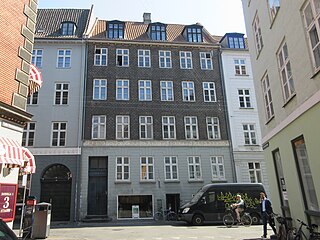
Skindergade 21 is a Neoclassical property situated on Skindergade, opposite Lille Kannikestræde, in the Old Town of Copenhagen, Denmark. It was listed in the Danish registry of protected buildings and places in 1964. Former residents include architect Michael Gottlieb Bindesbøll, poet Henrik Hertz, painter Heinrich Hansen and politician Carl Theodor Zahle.

Skindergade 6 is an 18th-century property situated on Skindergade, off the shopping street Købmagergade, in the Old Town of Copenhagen, Denmark. It was listed in the Danish registry of protected buildings and places in 1950. Former residents include the later Governor-General of the Danish West Indies Peter von Scholten, composer Hardenack Otto Conrad Zinck, linguist Rasmus Rask and clockmaker and politician Henrik Kyhl. Skindhuset, a retailer of leather products, is based in the building.
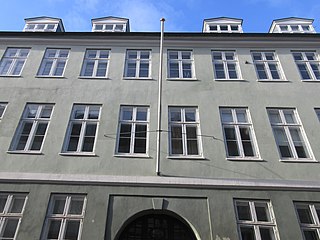
Brolæggerstræde 6 is a Neoclassical property situated in the Old Town of Copenhagen, Denmark. It was listed in the Danish registry of protected buildings and places in 1950. Former residents include the later bishop Jacob Peter Mynster and the politician Balthazar Christensen.

Store Kongensgade 81 is a Neoclassical property situated in Store Kongensgade between Frederiksgade and Hindegade, in Copenhagen, Denmark. The complex consists of a Neoclassical residential building from the 1780s fronting the street and a number of somewhat older secondary wings, surrounding two consecutive courtyards, on its rear. It was listed in the Danish registry of protected buildings and places in 1918. The artist Lorenz Frølich, whose father and uncle owned the property for almost 50 years, spent his childhood at the site. Other notable former residents include former Governor-General of the Danish West Indies Frederik von Walterstorff, historian and social critic Niels Ditlev Riegels, physician Johan Daniel Herholdt (1764-1836) and painter August Schiøtt. The property is now owned by Jeudan.

Store Kongensgade 59 is a late 18th to early 19th-century building complex, surrounding a central courtyard, situated on Store Kongensgade in Copenhagen, Denmark. It consists of two five-bay buildings fronting the street, two side wings and two rear wings. The northern (right) front wing dates from 1782 while the other buildings were added some time after 1800. The two buildings fronting the street were jointly listed in the Danish registry of protected buildings and places in 1918. Notable former residents include author Knud Lyne Rahbek, politicians Niels Rosenkrantz and Johan Sigismund von Møsting, landscape painter Georg Emil Libert, businessman Alfred Hage and actor Arthur Andersen.

Toldbodgade 5 is a 17th-century property situated in Toldbodgade, off Nyhavn in central Copenhagen, Denmark. It was listed in the Danish registry of protected buildings and places in 1977. The composer Carl Nielsen and the sculptor Anne Marie Carl-Nielsen resided in the apartment on the first floor from 1898 to 1906.

Kompagnistræde 32 is a Neoclassical property situated on Kompagnistræde, between Rådhusstræde and Hestemøllestræde, in the Old Town of Copenhagen, Denmark. Built with three storeys over a walk-out basement by Andreas Hallander in 1799, it was later expanded by one storey in the 1840s. A brewery was operated in a rear wing from its construction until at least the 1860s. The building was listed in the Danish registry of protected buildings and places in 1968. An adjacent warehouse and the rear wings are not part of the heritage listing. The Danish Union of Teachers was headquartered in the building from 1957. The union is now based at nearby Vandkunsten 12 but their old headquarters is still owned by them and let out as office space.

The Journalists' House, situated at Gammel Strand 46, opposite Thorvaldsens Museum and Christiansborg Chapel, is the Danish Union of Journalists' headquarters in Copenhagen, Denmark. The Neoclassical building was constructed by Andreas Hallander as part of the rebuilding of the city following the Copenhagen Fire of 1795, incorporating elements from the previous building on the site. It was listed in the Danish registry of protected buildings and places in 1918. Notable former residents include the clergy Christian Bastholm, poet and translator Ditlevine Feddersen, agriculturalist Oluf Christian Olufsen, naval officers Peter Norden Sølling and Carl Irminger, opera director and choir conductor Giuseppe Siboni, court physician Joachim Lund Drejer, ballet master August Bournonville, schoolmistress Natalie Zahle and church historian Carl Joakim Brandt.
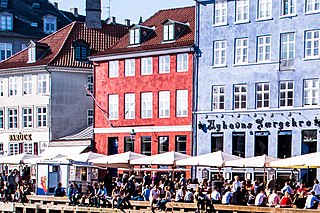
Nyhavn 3 is an 18th-century property overlooking the Nyhavn Canal in central Copenhagen, Denmark. It was listed in the Danish registry of protected buildings and places in 1945.

Store Kannikestræde 15 is a Neoclassical property situated at the corner of Store Kannikestræde and Lille Kannikestræde in the Old Town of Copenhagen, Denmark. It was listed in the Danish registry of protected buildings and places in 1950. A plaque on the facade commemorates the fact that Peter Faber was a resident in the building when he wrote Højt fra træets grønne top in 1847. Other notable former residents include the landscape painter Thorald Læsøe, printmaker Søren Henrik Petersen (1788-1860), historian Caspar Frederik Wegener and illustrator Peter Christian Klæstrup.

Østergade 13 is a Historicist building complex situated on the shopping street Strøget in central Copenhagen, Denmark. Originally two separate 18th-century buildings, three and four bays wide, respectively, Østergade 13 owes its current appearance to a renovation in 1856. Lille Kongensgade 12–14 on the other side of the block is also part of the property. Carl Antonelli's plaster workshop—known for its reproductions of many of Bertel Thorvaldsen's works—was based on the site from c. 1820 to 1854. Kunstforeningen was also based in the building from 1834 to 1854. Other notable former residents include the educator Carl Mariboe, economist and writer Oluf Christian Olufsen (1764–1827) and businessman Isaac Wulff Heyman. The property is today owned by Odense-based Barfoed Group.

Kvæsthusgade 1/Nyhavn 69 is a three-storey building situated at the corner of Nyhavn and Kvæsthusgade. A memorial featuring a bust of a diver wearing a diving helmet commemorates that Em. Z. Svitzer's Bjernings-Enterprise, a salvage company founded by Emil Zeuthen Svitzer back in 1833, was once headquartered in the building. Notable former residents include the actress Magda von Dolcke.



